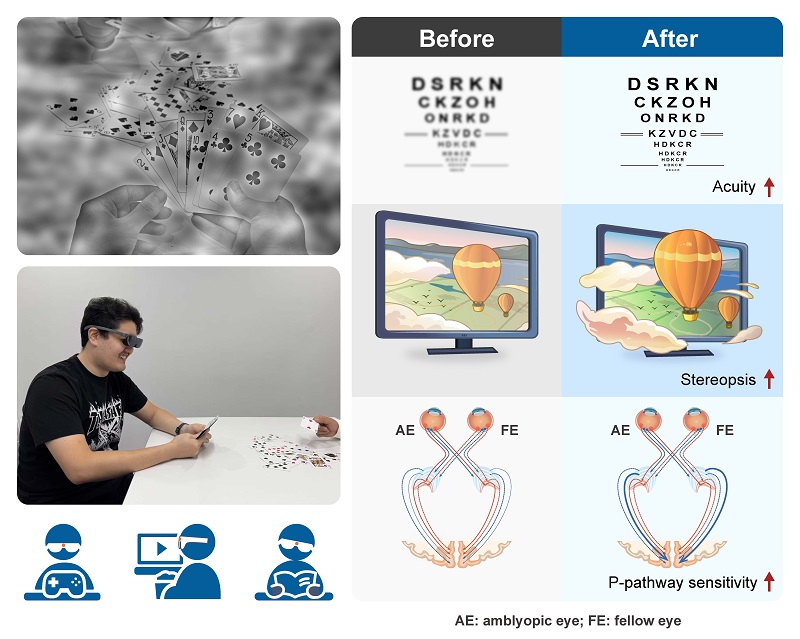
In a study published in Advanced Science, researchers from the Institute of Biophysics of the Chinese Academy of Sciences, along with the collaborators at the Institutes of Brain Science and Fudan University, have developed an innovative altered reality (AR) training method that significantly improves visual function in adults with amblyopia.
Amblyopia, typically arises from abnormal visual development and is notoriously difficult to treat in adulthood. Visual function depends on two key parallel visual pathways: the magnocellular (M) pathway, which processes motion and broad visual patterns, and the parvocellular (P) pathway, which handles fine spatial detail and color. Impairments in these pathways are linked to neurodevelopmental and neurodegenerative disorders. Traditional visual training methods often fail to generalize improvements and suffer from low patient compliance, limiting their clinical utility.
To address these challenges, the research team developed a real-time AR system that captures natural scenes using high-definition cameras, processes the visual input using GPU computing, and delivers modified imagery through OLED head-mounted displays.
To specifically enhance the function of the P pathway, the system disrupts the phase of low spatial frequency (SF) information, turning it into rapidly flickering noise, while preserving high SF details. Furthermore, by reducing the signal-to-noise ratio of high-frequency information in the dominant eye, the system enhances the contribution of the non-dominant eye in the P pathway.
The study found that short-term AR training significantly improved visual acuity and high SF sensitivity in healthy participants, restoring binocular balance with long-lasting effects. After one week of home-based training with lightweight AR glasses, patients with amblyopia showed significant improvements in visual acuity, eye dominance, and stereoscopic vision in the amblyopic eye, with high compliance.
This innovative augmented reality training technology enables selective visual pathway interventions in everyday settings, providing substantial and lasting improvements in visual function for both healthy adults and patients with amblyopia. It offers a promising new solution for the rehabilitation of visual disorders such as amblyopia, glaucoma, and developmental dyslexia, while also holding great potential for enhancing visual performance in the general population.

AR visual training significantly improves visual acuity, stereoscopic vision, and parvocellular pathway sensitivity in adults. (Image by ZHANG Peng's group)

86-10-68597521 (day)
86-10-68597289 (night)

52 Sanlihe Rd., Xicheng District,
Beijing, China (100864)

